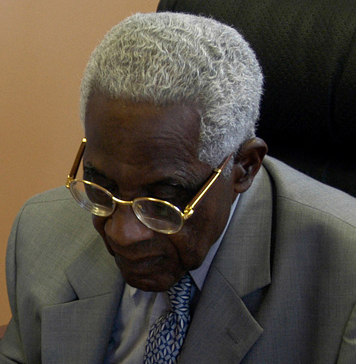Negritude (in the Caribbean)
NEGRITUDE
“Negritude, French Négritude, literary movement of the 1930s, ’40s, and ’50s that began among French-speaking African and Caribbean writers living in Paris as a protest against French colonial rule and the policy of assimilation. Its leading figure was Léopold Sédar Senghor (elected first president of the Republic of Senegal in 1960), who, along with Aimé Césaire from Martinique and Léon Damas from French Guiana, began to examine Western values critically and to reassess African culture.
It was not until the 1920s, however, that the challenge of a distinctive literary form was accepted. Then, as part of Spanish-American Modernism, Spanish and French Caribbean writers began to break away from European ideals and to identify themselves with their fellow West Indians, most of whom were black.
The leaders of this movement, mainly poets, were Luis Palés Matos (Puerto Rico), Jacques Roumain (Haiti), Nicolás Guillén (Cuba), Léon Damas (French Guiana), and Aimé Césaire (Martinique). Jean Price-Mars, a Haitian ethnologist, in “Ainsi parla l’oncle (1928; “Thus Spoke the Uncle”), declared that his purpose was to “restore to the Haitian people the dignity of their folklore.” The achievement of this negritude, finely expressed in Césaire’s poem “Cahier d’un retour au pays natal” (1939; Return to My Native Land), was the construction into poetic forms of the rhythmic and tonal elements of the islands’ rituals and speech patterns, using Symbolist and Surrealist techniques.
The British Caribbean, developing its national literature after 1945, made its own contribution in the folk dialect novel: Vic Reid’s New Day (1949), Samuel Selvon’s A Brighter Sun (1952) and The Lonely Londoners (1956), George Lamming’s In the Castle of My Skin (1953), and V.S. Naipaul’s Mystic Masseur (1957) and A House for Mr. Biswas (1961), among others; and in the poetry of Louise Bennett (Jamaica Labrish, 1966).
Paradoxically, anglophone Caribbean development was formally conservative, working toward an “open” rather than an autochthonous, or indigenous, expression in the work of C.L.R. James (Trinidad) and the poetry of Derek Walcott (St. Lucia). In the novels of Wilson Harris (Guyana), the Symbolist and Surrealist techniques of the Modernist movement reappear; and the poetry of Edward Brathwaite (Rights of Passage [1967], Masks [1968], Islands [1969]) attempts to reassert the place of Africa in the Caribbean.”
RELATED THINKERS
RELATED TEXTS

“Frantz Fanon and the Negritude Movement: How Strategic Essentialism Subverts Manichaeans Binaries” (2013) by Cynthia Nielsen
Citation: Nielsen, Cynthia. 2013. “Frantz Fanon and the Negritude Movement: How Strategic Essentialism Subverts Manichean Binaries.” Callaloo. 36 (2).
-

“What is Mine: Cesairean Negritude between the Particular and the Universal.” (2010) by Doris Garraway
Citation: Garraway, Doris L. 2010. “What is Mine: Cesairean Negritude between the Particular and the Universal.” Research in African Literatures. 41(1) (Special Issue: Aime Cesaire, Poet, Politician, Cultural Statesman): 71-86.
Info: This article deploys the critical vocabulary of Frantz Fanon in order to read Césaire as a theorist of colonial disalienation whose Negritude is not a fixed object but a process through which Césaire comes to problematize both black essentialism and the very idea of racial particularism itself.
-

“The Dialectic of Colonialism and Culture: The Origins of the Negritude of Aime Cesaire” (1979) by Dale Tomich
Citation: Tomich, Dale. 1979. “The Dialectic of Colonialism and Culture: The Origins of the Negritude of Aime Cesaire.” Review (Fernand Braudel Center). 2(3): 351-85.



